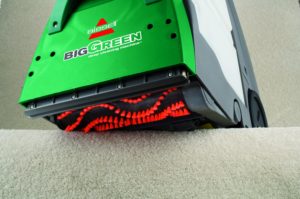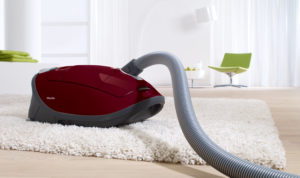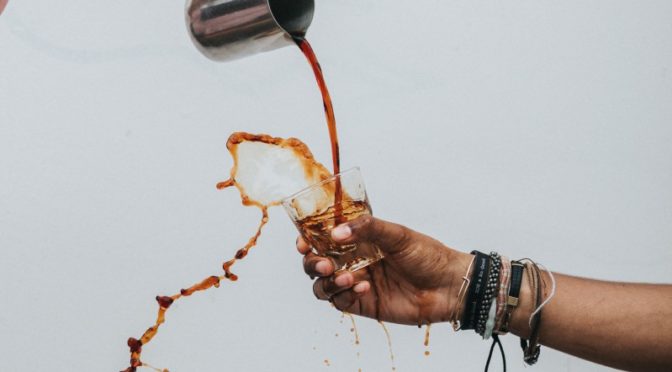
Most people who don’t clean or sell carpets for a living consider stained and soiled carpets to be pretty much the same thing. This makes sense when you consider how both inherently involve discoloration and damage to carpets. However, if you’ve ever looked through a carpet warranty, you’ll quickly learn that they see carpet staining and soiling as two completely different things, and you’ll want to learn this difference in order to not find yourself on the hook for a carpet replacement you thought your warranty would cover. Today we’ll look at the difference between staining and soiling and how to prevent or clean both.
What is carpet staining and what leads to it?
Carpet staining simply refers to some kind of discoloration on your carpet; it happens when something touches your carpet (e.g., wine, coffee, orange juice…) and becomes embedded in your fibers. If you’ve ever spilled anything on your carpets (or your kids have, or your guests have…), you get it. Babies and pets also produce stains through a variety of orifices.
Stains occur by occupying empty dye sites in carpeting. As their name suggest, these are areas in carpet fibers that didn’t take in coloration (dye) when the carpet as dyed at a factory. It can only happen when carpets are dyed after the fibers have already been produced; in solution-dyed carpeting, the coloration is added as the fibers themselves are made, and staining is next to impossible.
Some carpets are more susceptible to stains than others due to fiber composition. Nylon is an example of a highly absorbent synthetic fiber, while polyester is an example of a low absorption fiber. In general, a quality carpet will have some kind of stain treatment to reduce the risk of staining occurring.
How do you prevent carpets from staining?
While it might sound obvious, to prevent stains, you’ll want to prevent spills from occurring as much as possible. Given that they’re eventually going to happen in any normal home, the next step is to work to clean up spills as quickly as possible before they can turn into stains. We cover stain treatment through a variety of approaches (e.g., natural and mechanical) for stains based on wine, coffee, and orange juice here.
What is carpet soiling and how does it happen?
Carpet soiling looks similar to staining but doesn’t necessarily come from spills. Soiling comes from the combination of residue (typically oil) on carpet fibers and dirt. Such residue can come from a variety of sources, including spot treatment products like stain removers, as well as from spills that weren’t completely cleaned up. Oil buildups can come from oily products like cooking or baby oil, but typically come from walking on carpets barefoot like normal human beings. Being human, we have oil in our skin, and when that oil embeds itself in carpet fibers, dirt can start to stick to it and lead to soiling.
Just as certain carpet fibers are more susceptible to staining than others, you’ll find particular fibers are more likely to soil than others. An example of a high soiling fiber is olefin; since olefin, or polypropylene, is essentially plastic, which is itself a form of oil, it makes sense that it would have a high affinity for oil in other forms.
How do you prevent carpets from soiling?
The most basic way to prevent human-based oils from soiling carpets is to never walk barefoot. Using socks and slippers helps keep most, though not all, oils from the body away from carpets, which makes soiling much harder to occur. However, this only works if you and your guests religiously observe this policy, and it also requires never sitting on carpets or lying down on them, which most people enjoy doing from time to time. As a result, most people focus on cleaning rather than on prevention when it comes to human-based oil soiling.
For general residue, you’ll want to clean any spills that occur as quickly and throughly as possible. You’ll also want to make sure that any cleaning products you use on carpets are thoroughly rinsed out so they don’t have a chance to attract dust and dirt.
Although you can clean carpets with some degree of effectiveness by hand (e.g., through paper towels and water), you’re going to get the best results by bring heavy machinery (i.e., carpet cleaners and vacuum cleaners) to the job, as they’ll be able to clean deeper, faster, harder, and more efficiently than we ever can by hand. We’ll go into recommendations below.
Which carpet cleaners and vacuums are best for preventing staining and soiling?

While you can’t guarantee staining or soiling won’t occur no matter which carpet or vacuum cleaner you use, you can increase your odds of removing stains and soiling with judicious use of certain appliances. For carpet cleaning, we generally recommend the Bissell 86T3 Big Green for any budget under $1,000. As we’ve noted repeatedly (e.g., here and here), it’s one of the best investments you can make for home cleaning projects. You’ll want to use it early and often on stains and soiling for maximum effect, although we’ve seen these machines pull out stains that sat in carpets for decades.

For vacuums, we’re fans of the Miele Complete C3 Soft Carpet or the Miele Compact C2 Electro+; both are capable of handling, low, medium, and high-pile carpets. If you want to be able to handle every kind of carpet on the market, including soft ones, you’ll want the Soft Carpet. The Electro+, on the other hand, is a good compromise cleaner for families searching for a buy-it-for life vacuum on a smaller budget.
![]() You can buy the Bissell 85T3 Big Green carpet cleaner here on Amazon. You can buy the Miele Complete C3 Soft Carpet here or buy the Miele Compact C2 Electro+ here.
You can buy the Bissell 85T3 Big Green carpet cleaner here on Amazon. You can buy the Miele Complete C3 Soft Carpet here or buy the Miele Compact C2 Electro+ here.
![]() Canadians can buy the Miele Soft Carpet here, the Compact Electro+ here, and the Bissell Big Green here.
Canadians can buy the Miele Soft Carpet here, the Compact Electro+ here, and the Bissell Big Green here.
 If you find our research on PMC helpful, you can follow our efforts to keep maniacally reviewing home cleaning tools by shopping through our links above. We promise to keep fighting the good fight against every horror children, animals, and grown, yet messy humans can inflict upon a clean home.
If you find our research on PMC helpful, you can follow our efforts to keep maniacally reviewing home cleaning tools by shopping through our links above. We promise to keep fighting the good fight against every horror children, animals, and grown, yet messy humans can inflict upon a clean home.

